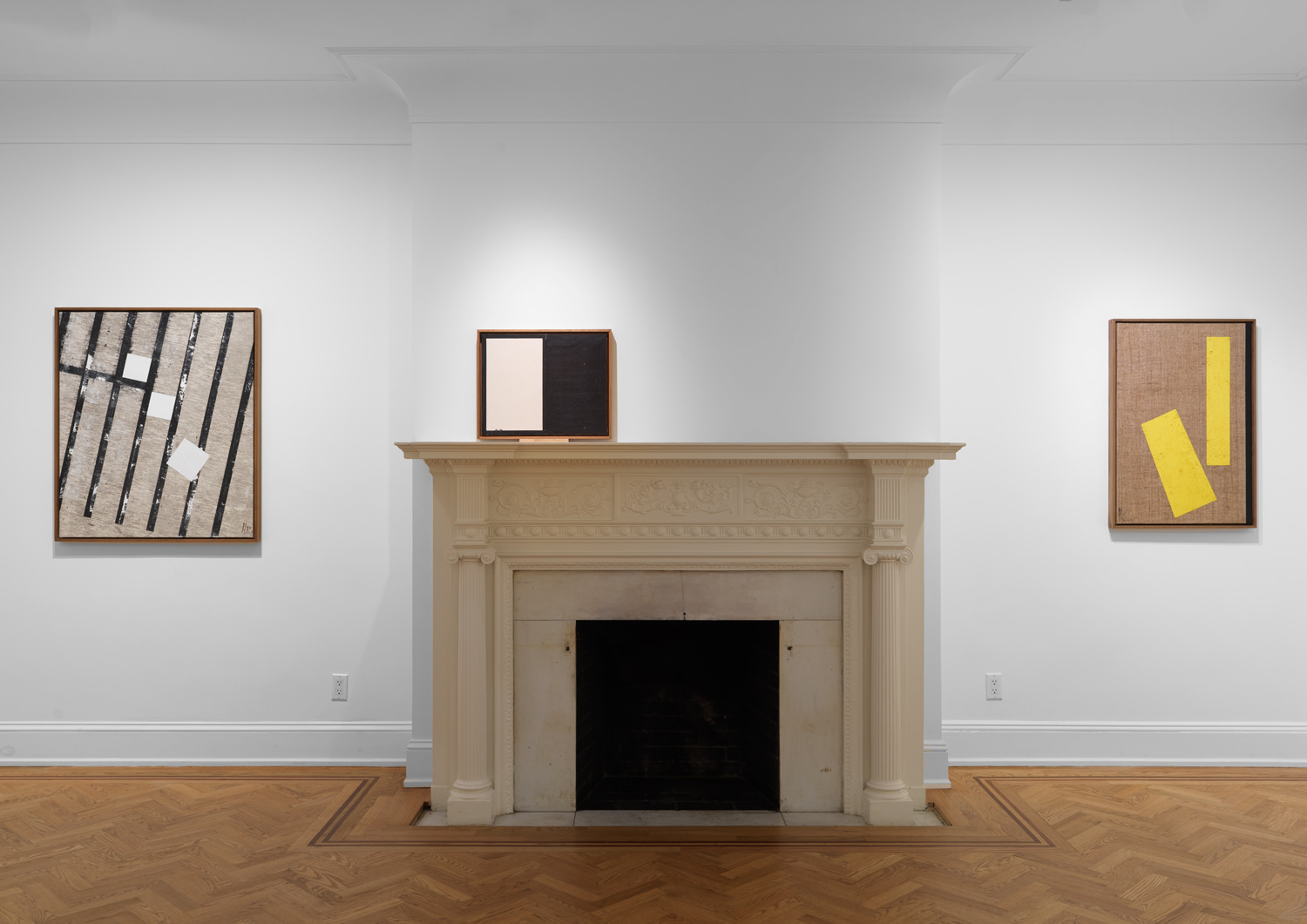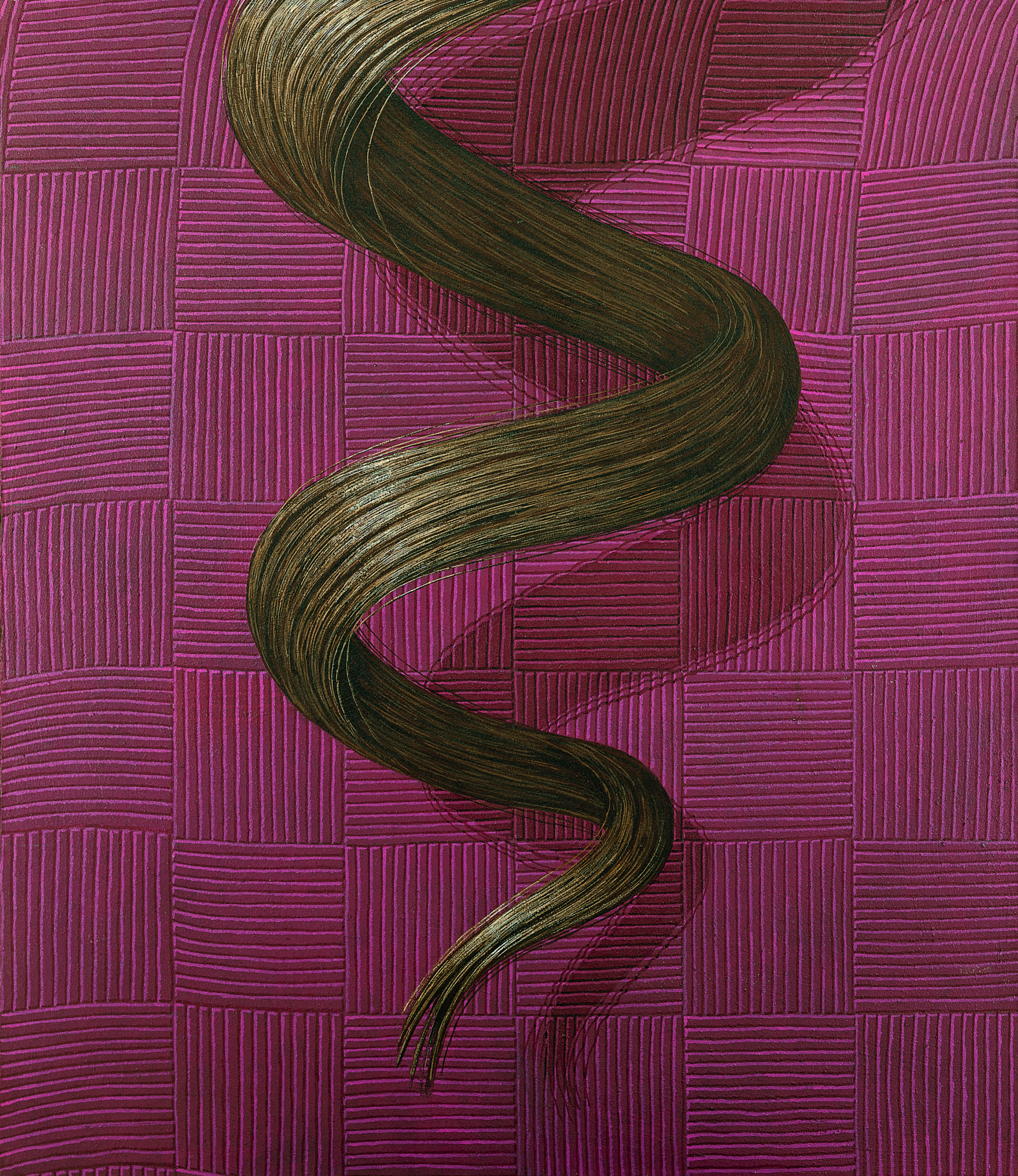Two white circles delimit a pair of Huang Rui’s eyeglasses in Self Portrait (1982). We discover, beyond the rims, the keen expression of a young and determined man. Different shades of blue compose the upper body of the subject and background of the portrait. In a style showing knowledge of Fauvism, the patchwork of color renders shapes legible. The lack of depth attests to a childlike rawness; a sense of excitement is palpable and still lives on the surface of the drawing.
The idea that post-Impressionism might be radical in the 1980s seems anachronistic, but in China, l’art pour l’art was forbidden and deemed counterrevolutionary. A few paintings in Huang Rui’s solo exhibition currently on view at Boers-Li Gallery bring attention to this important moment, when thanks to a discursive relaxation in the Communist Party’s attitude towards culture, artist groups bourgeoned and made way for an irreversible departure from art in service of politics.
Huang became a particularly important figure in this period called “the ‘85 Art New Wave.” Together with Ma Desheng, he was instrumental in founding The Stars, an artist collective that gathered in the new and effervescent post-Cultural Revolution landscape.
Unlike most of his contemporaries, Huang left China for Japan at an early stage in his career and remained there (with the exception of brief returns to Beijing) for 14 years. Important paintings from the “Space Structure” series (1983-1986) that he created in his early years in Japan are included in the exhibition at Boers-Li. In these paintings, awareness of mono ha’s minimalist work is undeniable—the 1980s was an intense period when the legacy of the movement was prominently discussed in Japan.
In “Space Structure,” Huang has striped any superfluous details of his paintings and sets aside his exploration of post-Impressionism in pursuit of a geometric abstraction. Fundamental elements such as pairs of circles or rectangles evoke the language of the Yijing; architectural elements such as windows and doors are morphed into fixed forms.
In the current New York exhibition, the juxtaposition of the series he completed in the 1980s and the recently completed “Zen Space” demonstrates the artist’s continued commitment to abstract painting, despite forays into performance, installation and sculpture. In some cases shown side by side with works from the Japan period, the recent works feature sharper lines and harsher contrasts.
While Huang’s earlier series incorporated references to traditional Chinese philosophy and relied on its iconography, or yet again alluded to architectural elements in the artist’s daily life, the paintings in “Zen Space” are complete abstractions. Rectangles of black and white paint stand in opposition, sometimes revealing the raw canvas. In other instances, imperfect shapes are painted with precision at the edge of the picture plane.
The title of the 2018 series “Zen Space” betrays the still geometry of the paintings. In an ironic reading, one makes out a critique directed towards Beijing, whose leaders began the process of evicting artists and galleries from their studios and spaces of the Chaochangdi district in the summer of 2017. In this context, the paintings’ stripped surfaces displaying rectangles and squares can be read as fragments of architectures, standing in for spaces that once were.
In New York, the association between recent events in Beijing’s art district and Huang’s “Zen Space” series may not be obvious to the viewer; but it is clear that Huang has not abandoned his critical impulses, which he first manifested as a member of The Stars.
This exhibition only begins to display the breadth of Huang’s cultural significance, and the selection of works might have benefited from a narrower periodization to allow an unfamiliar audience a more in-depth glimpse in the artist’s work. Perhaps that will only be possible to achieve with an exhibition of museum scale, which is long overdue in America. In the meantime, the exhibition at Boers-Li is on view through January 19.







